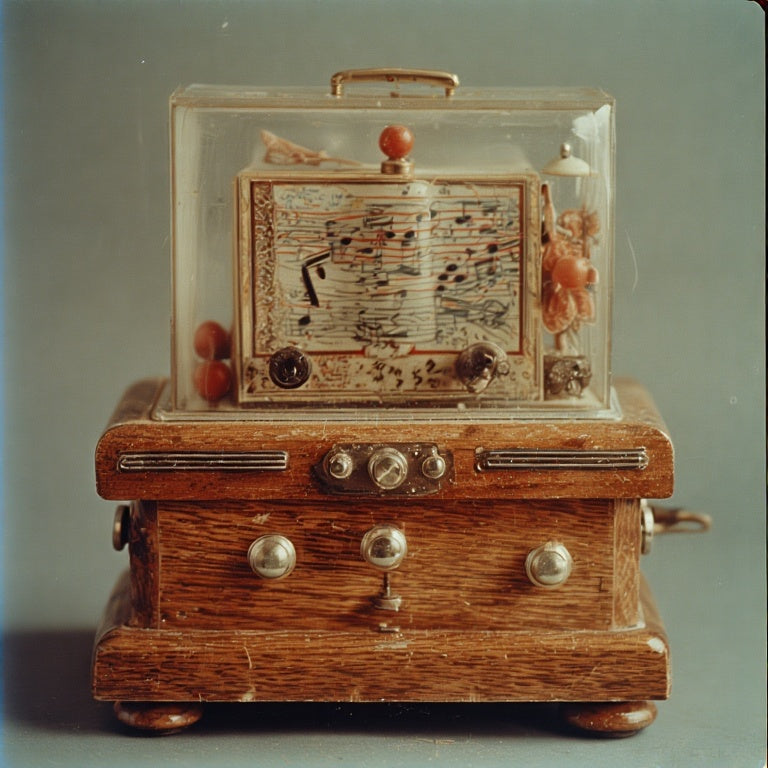
Who Invented Music Boxes?
Share
The enchanting melodies of music boxes have captivated audiences for centuries, offering a charming blend of craftsmanship and musical artistry. But who was the visionary behind the invention of the music box? To understand its origins, we need to explore the evolution of mechanical musical instruments and identify the pioneers who contributed to this delightful invention.
Early Roots and Precursors
The concept of mechanically producing music predates the modern music box. In the 15th and 16th centuries, people used devices like the "music-playing automata" and "clockwork organ" to generate sound. These early inventions relied on intricate mechanisms within clockworks that could play simple tunes, laying the groundwork for future developments.
The Birth of the Modern Music Box
The invention of the music box as we know it is generally credited to the late 18th and early 19th centuries, with significant contributions from European craftsmen and inventors. Among these, the Swiss and French artisans played pivotal roles.
Johann Nathaniel von Wilcke and the First Patents
In the early 19th century, inventors began patenting devices that resembled modern music boxes. Notably, Swiss watchmakers and mechanicians, such as Antoine Favre-Salomon and later, the Swiss engineer and inventor Jean-Jacques Perret, contributed to refining the technology. However, their focus was often on musical watches and small automata rather than standalone music boxes.
The Contributions of Pierre Jaquet-Droz
Pierre Jaquet-Droz, a Swiss watchmaker from the 18th century, built complex automata capable of intricate movements and sounds. While not a music box inventor per se, his work influenced the development of mechanical music devices.
The Role of the Swiss Watchmaking Industry
It was in Switzerland during the early 19th century that the music box truly took shape. The Swiss watchmaking industry, renowned for its precision and craftsmanship, began producing refined devices equipped with pinned cylinders or later, steel combs with tuned teeth, which could play a variety of tunes.
The Invention of the Tinned Cylinder and the Steel Comb
The key technological breakthrough came with the development of the pinned cylinder, which stored musical notes via pins arranged in specific patterns. This innovation is often attributed to Swiss and French craftsmen in the early 1800s. The combination of a pinned cylinder and a tuned steel comb formed the core of the modern music box.
Key Inventors and Manufacturers
While no single individual holds the title of the absolute inventor, several figures are recognized for their contributions:
Pierre Jaquet-Droz and his workshop: Early automata and mechanical devices that influenced musical automata.
Jean-Baptiste Vuillaume: A French luthier and inventor who developed early mechanical musical devices.
The Swiss firm of Rochat: Known for producing high-quality music boxes in the early 19th century.
The Swiss watchmakers: Many artisans and manufacturers in the Swiss Jura region developed and refined the pinned-cylinder music box during the 1820s and 1830s.
Conclusion
The invention of the music box cannot be attributed to a single individual but rather to a collective evolution driven by Swiss and French craftsmen in the early 19th century. Their innovations in mechanical design, particularly the development of the pinned cylinder and tuned comb, transformed the concept of mechanical music into the elegant and enduring art form we cherish today.
In summary:
Who invented music boxes?
The modern music box resulted from the innovations of Swiss and French craftsmen in the early 19th century, with key contributions from watchmakers and automata artisans.
Main contributors:
No single inventor; rather, a collaborative evolution involving artisans like Pierre Jaquet-Droz and manufacturers in Switzerland.
The music box stands as a testament to human ingenuity and craftsmanship, enchanting generations with its timeless melodies.
